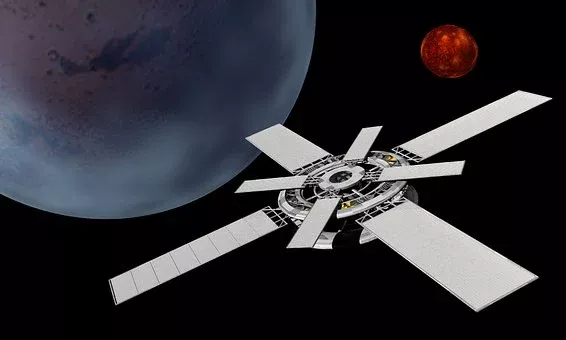For a variety of reasons, iPhone 12 sales are on a downward trend compared to the past, which is a huge blow to Apple. In response, Apple seems to want to stabilize the situation by adding a new radio technology to the iPhone.
Earlier, well-known analyst Ming-Chi Kuo published an investor report. He said Apple's upcoming iPhone 13 model will feature a Low Earth orbit (LEO) satellite communications connectivity service that will allow users to send messages and make calls in areas not covered by 4G or 5G.
Mr. Kuo is an analyst at TF International Securities, an Asia-Pacific financial services group that often covers projections of Apple's future plans, providing a reliable source of information for the public.
However, it is important to note that the upcoming iPhone 13, while including hardware capable of connecting with the LEO satellite communication service, may not yet be enabled for software for this service.
For now, Apple is focusing on using satellite connectivity services to help users in emergencies. For example, when a major accident such as an aircraft crash or shipwreck occurs in a remote area without a signal, allow users to send a short emergency text or SOS distress signal to first responders.
In addition, Apple may add an emergency satellite messaging service to the messaging app that allows users to send messages to friends without a signal, and may even support phone calls.
There are still many questions about leo satellite communication connectivity services. For example, is the satellite service only available for Apple features such as iMessage and FaceTime? Is it limited to a special pattern of emergency messages? Whether it can be tried for free
Recently, Mark Gurman, an analyst from Bloomberg, said, "The satellite capabilities of the Apple iPhone 13 will only be available in areas without any cellular network coverage, and only in some specific markets." In addition, users can connect to the satellite outdoors and need to wait about a minute to receive the signal.

Figure | Satellite (Source: Pixabay)
In fact, the hardware for the iPhone 13 to support satellite communications feature startup isn't ready yet. And the hardware cost will be expensive, and may even provoke a revolt from the phone carriers that Apple relies on.
It is understood that the satellite communication service of the iPhone 13 is supported by the Qualcomm X60 baseband chip, while other brands of smartphones may need to wait until 2022 if they want to provide satellite communication services for their users, when the Qualcomm X65 baseband chip will be used.
While SpaceX's Starlink is better known among the many LEO satellite communication service providers, the most likely to work with Apple in terms of technology and service coverage this time is Globalstar.
In this regard, Guo Mingji said, "The simplest solution to provide users with LEO satellite communication services is for a single network operator to cooperate with GlobalStar. This allows customers to use Globalstar's satellite communication services on iPhone 13 directly through their network carrier without additional contracts and payments. ”
Globalstar is a leading provider of customizable satellite IoT solutions serving global customers in industries such as oil and gas, transportation, emergency management, government, maritime and outdoor recreation. In 2020, the international 5G standards organization 3GPP approved The GlobalStar's Band n53 as the 5G band.
It is reported that Qualcomm has been cooperating with GlobalStar. Previously, when Qualcomm announced that its upcoming X65 chip would support Globalstar's Band n53 technology.
As a pioneer in mobile satellite voice and data services, Globalstar allows businesses to more easily monitor and manage their mobile assets by streamlining operations by connecting people to their devices, providing personal security and communication, and automating data.
In addition, Kuo said: "In the network industry, LEO satellite communication services are a technology equivalent to millimeter wave 5G, and Apple may use both technologies at the same time." ”
Apple has been actively developing the business of satellite communication connection services, and has set up a professional scientific research team for this purpose.
Previously, Apple's satellite communications technology team conducted research on new ways to transfer data directly to iPhones and other devices, with the main goal of reducing dependence on wireless carriers and solving the problem of coverage. In addition, in the process of exploring satellite technology, Apple has also carried out more accurate location tracking of its devices, so as to achieve continuous improvements in maps and new features.
Figure | Apple CEO Tim Cook (Source: Apple's official website)
It is worth mentioning that Apple CEO Tim Cook has made satellite communication projects a priority for the company and hopes to achieve results as soon as possible. In addition, Apple is ramping up its hiring efforts to find engineers with experience designing components for communication devices, while hiring other executives from aerospace and wireless data transmission.
In the future, Apple may be committed to bringing users a richer experience, embedding LEO satellite communication services in many kinds of devices. Kuo speculates that upcoming IoT accessories such as Apple AR headsets and Apple Cars may also take advantage of LEO satellite communication services.